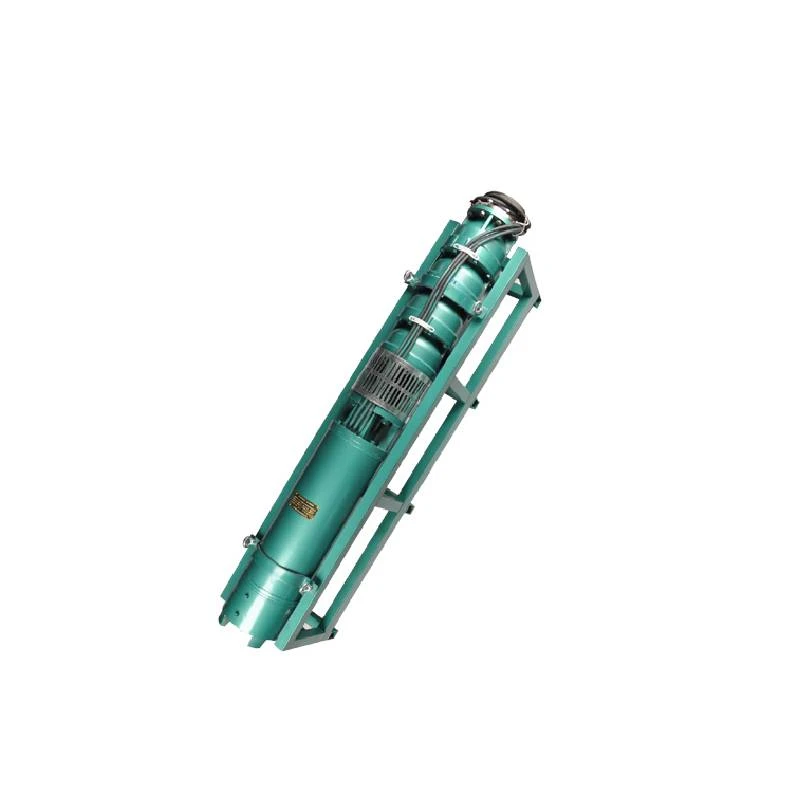ធ្នូ . 31, 2024 13:00 Back to list
Innovative Solutions for Submersible Deep Well Pump Efficiency and Performance Enhancement
Submersible Deep Well Pumps An Overview
Submersible deep well pumps have become an essential technology for various applications, from agricultural irrigation to municipal water supply and even industrial processing. These pumps are specifically designed to operate underwater, making them highly efficient in drawing water from deep wells, boreholes, and aquifers. In this article, we will explore the functioning, benefits, applications, and maintenance of submersible deep well pumps.
Working Principle
Unlike standard surface pumps, which draw water upward from a supply source, submersible deep well pumps are placed directly within the water source. This design allows them to exert pressure and push water to the surface instead of simply pulling it. The pump consists of a motor, impellers, and a long shaft, all housed within a protective casing. The motor is sealed to prevent water from entering and damaging the electrical components, and it is typically a multi-stage vertical pump designed to provide high pressure.
When activated, the motor drives the impellers, which create centrifugal force. This force propels water through the pump and up to the surface, where it can be distributed as needed. The efficiency of submersible pumps is largely due to their ability to operate below the surface level, minimizing the risk of cavitation—a phenomenon that can decrease the pump's efficiency and lifespan.
Benefits of Submersible Deep Well Pumps
1. High Efficiency Submersible pumps are known for their efficiency in moving large volumes of water from significant depths. Their design allows for minimal energy loss compared to surface pumps.
2. Durability and Longevity These pumps are built to withstand corrosive environments, thanks to the materials used in their construction. With proper maintenance, many submersible pumps can function effectively for decades.
3. Reduced Noise Levels Because they are submerged, these pumps operate much quieter than surface pumps, making them ideal for residential areas or farms where noise may be a concern.
4. Lower Maintenance Requirements While all pumps require some maintenance, submersible pumps usually demand less frequent servicing due to their construction and operational design. Additionally, there is no need for a complicated surface-mounted system, which can often require more upkeep.
submersible deep well pumps

Applications
Submersible deep well pumps have a diverse range of applications. In agriculture, they are utilized for irrigation, enabling farmers to draw water from deep aquifers to sustain crops. In residential settings, these pumps provide water for homes, particularly in rural areas where deep wells are common. Municipalities rely on submersible pumps for their water supply systems, ensuring that urban populations have access to clean and reliable water. Industrial applications are also prevalent, with these pumps being used for cooling systems and wastewater management.
Maintenance
While submersible deep well pumps require less maintenance than traditional pumps, routine checks are still essential to ensure their longevity and efficiency. Key maintenance practices include
1. Regular Inspections Periodically check the pump's electrical components and the integrity of the motor casing to prevent water ingress.
2. Monitoring Performance Keep an eye on the flow rate and pressure. Any significant changes can indicate potential issues that need to be addressed immediately.
3. Checking for Blockages Ensure that the intake screen is clean and free of debris, as blockages can lead to reduced efficiency and increased wear on the pump.
4. Annual Servicing Consider a professional service check annually to thoroughly assess the pump's condition, including motor performance and impeller wear.
Conclusion
Submersible deep well pumps represent a significant technological advancement in water extraction and management. Their ability to function efficiently at great depths makes them an indispensable tool for various sectors. With their durability and lower maintenance needs, these pumps not only provide reliable water supply solutions but also adapt well to various applications. Understanding their operation, benefits, and necessary maintenance can help users maximize the performance of these essential devices, ensuring access to vital water resources for years to come.
-
submersible-sump-pump-auto-drainage-for-crawlspaces
NewsAug.22,2025
-
solar-powered-stainless-steel-submersible-well-pump-setup
NewsAug.22,2025
-
stainless-steel-well-pump-flow-rate-optimization
NewsAug.22,2025
-
water-filled-submersible-pump-fish-farm-oxygenation
NewsAug.22,2025
-
submersible-pump-in-aquaculture-and-fish-farming
NewsAug.22,2025
-
deep-well-submersible-pump-for-drought-areas
NewsAug.22,2025
-
 submersible-sump-pump-auto-drainage-for-crawlspacesCrawlspaces, those narrow areas beneath homes, are prone to water accumulation due to leaks, groundwDetail
submersible-sump-pump-auto-drainage-for-crawlspacesCrawlspaces, those narrow areas beneath homes, are prone to water accumulation due to leaks, groundwDetail -
 solar-powered-stainless-steel-submersible-well-pump-setupHarnessing solar energy to power stainless steel submersible well pumps is a sustainable and coDetail
solar-powered-stainless-steel-submersible-well-pump-setupHarnessing solar energy to power stainless steel submersible well pumps is a sustainable and coDetail -
 stainless-steel-well-pump-flow-rate-optimizationIn various applications like agriculture, domestic water supply, and industrial use, the flow rate oDetail
stainless-steel-well-pump-flow-rate-optimizationIn various applications like agriculture, domestic water supply, and industrial use, the flow rate oDetail
